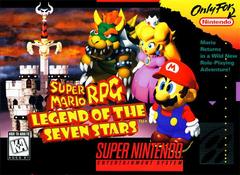virtual console
The Legend of Zelda
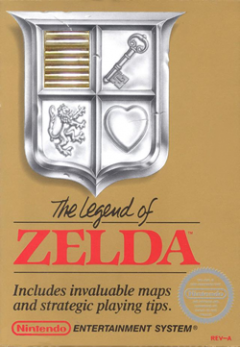 Achievement Unlocked: Review a game older than you.
Achievement Unlocked: Review a game older than you.
Zelda may be the most beloved video game franchise, but I've never counted myself among series super-fans. Since cutting my teeth on the series with Ocarina of Time, I've merely enjoyed all but a handful of games in the series. Don't get me wrong, they're all great, but I wouldn't put any in my top ten.
That said, I like checking out each title and comparing it with the rest of its ilk. Other than the experimental black sheep Zelda II: Adventure of Link, the first Legend of Zelda may be the series' most divisive game. Fans can't seem to agree whether the game's old school difficulty and unguided progression make it dated or just different. Lacking an in-game overworld map and never funneling players away from difficult areas, the NES original certainly requires more of its players than any Zelda since.
Nintendo recently launched its 3DS Ambassador program, giving the system's early adopters ten free NES games. I had been meaning to check out several of the ambassador titles, but none more so than The Legend of Zelda. Fifteen hours and a princess rescue later, I'm ready to weigh in on the Dated vs. Different debate.
Sin & Punishment
 Every Monday morning since the Wii craze began in November 2006, the Wii
Shop Channel has been updated with new downloadable titles to purchase.
The Virtual Console, one of the Wii's few enticing tidbits to core
gamers at launch, promised to make all our favorite classic games
through the N64 era available on one piece of hardware. Things started
out strong for the VC, which reached the 100-game milestone just over
six months after launch. It seems Nintendo just couldn't keep that pace,
however, as the first seven months of 2010 have seen less than twenty
new retro titles. With obvious Nintendo classics like Star
Fox, Yoshi's Island, Pilotwings 64, and Excitebike 64 still waiting to
be let loose -- in addition to the many unseen third party games worth
revisiting -- it seems far too early for the Virtual Console to receive
less than one title a week.
Every Monday morning since the Wii craze began in November 2006, the Wii
Shop Channel has been updated with new downloadable titles to purchase.
The Virtual Console, one of the Wii's few enticing tidbits to core
gamers at launch, promised to make all our favorite classic games
through the N64 era available on one piece of hardware. Things started
out strong for the VC, which reached the 100-game milestone just over
six months after launch. It seems Nintendo just couldn't keep that pace,
however, as the first seven months of 2010 have seen less than twenty
new retro titles. With obvious Nintendo classics like Star
Fox, Yoshi's Island, Pilotwings 64, and Excitebike 64 still waiting to
be let loose -- in addition to the many unseen third party games worth
revisiting -- it seems far too early for the Virtual Console to receive
less than one title a week.
The future of the Virtual Console was looking bright in 2007, however, when Nintendo decided to make the N64 import classic Sin & Punishment
available outside of Asia for the first time. It seems Treasure always
planned a western release, as all the voice acting was
performed in English (with Japanese subtitles), even in the original
Japanese cartridge. The rumor is that a dried-up N64 market in 2000 made
the niche developer think twice. In a rare showing of extra effort on
Nintendo's part, Sin & Punishment was the first of a small
collection of games formerly exclusive to Japan to make it to the
Americas. It probably didn't take that much effort, though, since the
only translation required was in the main menu and tutorials. The
original Japanese subtitles persist even in the localized version.
I'd
always planned on putting down the $12 to try Sin & Punishment at
some point, but I figured the recent release of Sin & Punishment:
Star Successor for the Wii makes this as good a time as any. Might as
well snag the N64 game for some context, right? I downloaded the game
with the intent of completing a first hour review for our readers, but
it seems there isn't a whole lot to talk about beyond that first sixty
minutes, so this has been upgraded to full review status. Lucky you!
Super Ghouls 'n Ghosts
 Super Ghouls 'n Ghosts is a
game I knew very little about. When I was about eight years old, a few of my friends said it was "the destroyer of worlds." Not just difficult, but impossible.
None of my friends could progress very far, and as an eight year old,
I wanted to prove to them that I was superior. Unfortunately,
none of them would lend it to me, and I never really had the money to
buy it and every time I went to the video store to rent it, it was always
out. I don't know if it was just that popular, or if they lost it. I'm
guessing the latter.
Super Ghouls 'n Ghosts is a
game I knew very little about. When I was about eight years old, a few of my friends said it was "the destroyer of worlds." Not just difficult, but impossible.
None of my friends could progress very far, and as an eight year old,
I wanted to prove to them that I was superior. Unfortunately,
none of them would lend it to me, and I never really had the money to
buy it and every time I went to the video store to rent it, it was always
out. I don't know if it was just that popular, or if they lost it. I'm
guessing the latter.
Now, I understand that it was made in 1991 by Capcom. It’s been ported to a bunch of different gaming platforms including the PlayStation, Sega Saturn, Game Boy Advance, PlayStation 2, Xbox, PlayStation Portable and Virtual Console on the Wii.
It is the sequel to Ghosts 'n Goblins and Ghouls 'n Ghosts, and also loosely related to Demon's Crest. I've played games like Contra and got pretty far before hitting a mark that was impassable for me, even at the wee ages of nine. So I figured… how hard can this game be? Here's the first hour of Super Ghouls 'n Ghosts.
Final Fantasy IV
Square's Final Fantasy IV was originally released in Japan on the Super Famicom in 1991 and was localized in the US as Final Fantasy II, since the previous two games weren't released in America.
Final Fantasy IV changed the face of RPGs and set the standard for the name final Fantasy for years to come. The storytelling was unparalleled in video games and the amount of detail lavished on the game was staggering.
For the 20th anniversary of the Final Fantasy series, Square-Enix remade FFIV in full 3D and released it on the DS in 2008, this time with the proper number in the title.
I've never played the original Super NES version, so this will be my first encounter with Final Fantasy IV. Can it hold up in this day and age?
Note: I considered reviewing this as a Half-Hour Handheld, but since it was originally released as a console game, I will go ahead and play it for the full hour.
Super Mario RPG: Legend of the Seven Stars
Shortly before they began squabbling about cartridges versus compact discs, and long before Square-Enix came crawling back for a suck at the Nintendo DS teat, Nintendo and SquareSoft got around quite nicely. One of the results of this relationship was Super Mario RPG: Legend of the Seven Stars, a Japanese style role-playing game set in the Super Mario Bros. universe. It's one of those games that no one would have ever thought to ask for, but was so successful, it spawned the Paper Mario series that landed on later Nintendo systems (with no help from Square) and the Mario and Luigi RPG series found on their handhelds.
The game itself was quite ambitious, even beyond the cooperation of two major developers. The cartridge had its own onboard CPU, not to be confused with the popular graphics Super FX chip, but simply a co-processor to the main CPU already in the Super Nintendo. The ability to include additional hardware on the actual game cartridge was one of the amazing design decisions that revealed the foresight the hardware team had and kept the console highly competitive through 1996 when Super Mario RPG was released.
Super Mario RPG ended up being one of the last, great Super Nintendo games, being released along with some of my other favorites including Harvest Moon and Kirby Super Star. It's the end of the classic era, in my opinion, but marks the beginning of some bold moves by Nintendo. Here's the first hour of Super Mario RPG for the Super Nintendo.
ActRaiser
 ActRaiser is a 1990 platformer/simulator for the Super Nintendo. No, it doesn't simulate the platformer genre, there are two distinct (very distinct) modes of gameplay in this game. You essentially play God, and are attempting to win back control of the world from the Devil. Of course, this translation never made it outside of Japan, but it's pretty obvious when you play it. I never played ActRaiser before this review, and really had no idea what to expect. First you play a pretty typical platformer, and then all of sudden you're building an ancient city while shooting arrows at demons. It's weird, but as you'll find out, fun.
ActRaiser is a 1990 platformer/simulator for the Super Nintendo. No, it doesn't simulate the platformer genre, there are two distinct (very distinct) modes of gameplay in this game. You essentially play God, and are attempting to win back control of the world from the Devil. Of course, this translation never made it outside of Japan, but it's pretty obvious when you play it. I never played ActRaiser before this review, and really had no idea what to expect. First you play a pretty typical platformer, and then all of sudden you're building an ancient city while shooting arrows at demons. It's weird, but as you'll find out, fun.
The game has been released on the Wii Virtual Console, so there's definitely an opportunity to play ActRaiser still today. Let's start playing the first hour of Actraiser for the Super Nintendo.
The Legend of Zelda: Ocarina of Time
 The Legend of Zelda: Ocarina of Time was released 10 years ago this week for the Nintendo 64 and 3D adventure gaming has never been the same. Topping many gamers' all-time favorites list and sitting atop at Game Rankings, Ocarina of Time currently reigns as the unofficial Greatest Game of All-Time. I remember quite well my anticipation for this game ten solid years ago and that it actually did live up to the hype.
The Legend of Zelda: Ocarina of Time was released 10 years ago this week for the Nintendo 64 and 3D adventure gaming has never been the same. Topping many gamers' all-time favorites list and sitting atop at Game Rankings, Ocarina of Time currently reigns as the unofficial Greatest Game of All-Time. I remember quite well my anticipation for this game ten solid years ago and that it actually did live up to the hype.
How much more can be said about this game that hasn't already been said? Well, no one has just played the first hour before and wrote a review just on that, so let me be the first. I'll be playing the original Nintendo 64 version, as there have been at least a Gamecube and Virtual Console port so far.
Ninja Gaiden and Ninja Gaiden
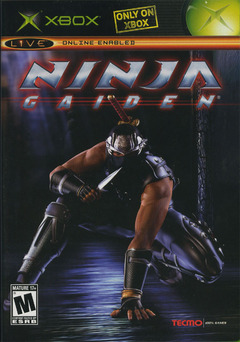
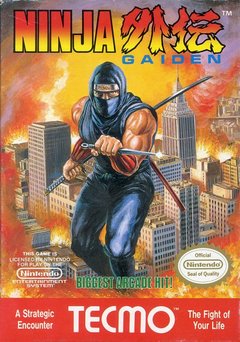 Ninja Gaiden and Ninja Gaiden are NES and Xbox games with the exact same name. Ninja Gaiden for the NES came out in 1989 and Ninja Gaiden for the Xbox came out in 2004. I'm not sure why Tecmo and lead designer Itagaki didn't give the Xbox Ninja Gaiden game a subtitle, but it's too late to wonder, because there are officially two games under the name of Ninja Gaiden, just released 15 years apart. In first hour tradition, I will be only playing Ninja Gaiden for one hour, but because they are named exactly the same, I will first play half an hour of Ninja Gaiden for the NES, and then half an hour on the Xbox. This will complicate the review a bit, but I'll try to always make is clear what game I'm talking about.
Ninja Gaiden and Ninja Gaiden are NES and Xbox games with the exact same name. Ninja Gaiden for the NES came out in 1989 and Ninja Gaiden for the Xbox came out in 2004. I'm not sure why Tecmo and lead designer Itagaki didn't give the Xbox Ninja Gaiden game a subtitle, but it's too late to wonder, because there are officially two games under the name of Ninja Gaiden, just released 15 years apart. In first hour tradition, I will be only playing Ninja Gaiden for one hour, but because they are named exactly the same, I will first play half an hour of Ninja Gaiden for the NES, and then half an hour on the Xbox. This will complicate the review a bit, but I'll try to always make is clear what game I'm talking about.
This is an exciting time for the Ninja Gaiden series, as Ninja Gaiden: Dragon Sword was released last month for the DS and Ninja Gaiden II will be out in a few weeks for the Xbox 360. Remember, this is a new Ninja Gaiden II, not Ninja Gaiden II: The Dark Sword of Chaos which was released on the NES in 1990. Yeah, Tecmo does it again. I plan on playing Dragon Sword (not Dark Sword) someday as it sounds pretty cool, but this review is all about the first hour of the two Ninja Gaidens. So let's get right down to it. To start, the first thirty minutes of Ninja Gaiden for the NES.
Mystery Dungeon: Shiren the Wanderer
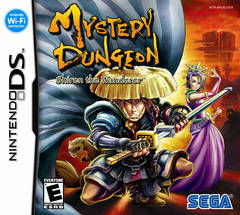 Mystery Dungeon: Shiren the Wanderer is a new Nintendo DS adventure that is actually a port of a 1995 Super Nintendo game released only in Japan. Shiren's gameplay is based off the classic computer games Rogue and NetHack. This means randomly generated stages, turn-based gameplay, and harsh character death penalties. Games today are wussified to the point of being able to save anywhere and three hour long tutorials that wean you into the game, Mystery Dungeon is kind of a breath of fresh air. Even if it is a 13 year-old breath, it mixes up the portable scene a bit.
Mystery Dungeon: Shiren the Wanderer is a new Nintendo DS adventure that is actually a port of a 1995 Super Nintendo game released only in Japan. Shiren's gameplay is based off the classic computer games Rogue and NetHack. This means randomly generated stages, turn-based gameplay, and harsh character death penalties. Games today are wussified to the point of being able to save anywhere and three hour long tutorials that wean you into the game, Mystery Dungeon is kind of a breath of fresh air. Even if it is a 13 year-old breath, it mixes up the portable scene a bit.
Not much left to say about Mystery Dungeon, I think the review and screenshots will explain the game pretty well.
Streets of Rage 2
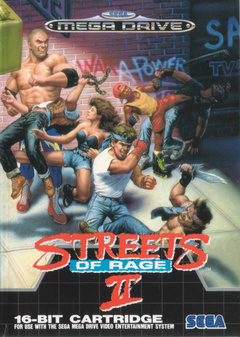 Streets of Rage 2 is often called the greatest beat 'em up and the must-play Sega Genesis game. Its popularity has lasted a long time in an age where the beat 'em ups are relatively rare (one of the latest being God Hand by the now dissolved Clover Studio). The entire series is reaching new fans now as Streets of Rage 1, 2, and 3 have all been re-released on the Nintendo Wii via the Virtual Console and on Xbox Live Arcade. Back to the game on hand though, beat 'em up games have a certain expectation associated with them: the story is not as important as the gameplay and the action should start right away. This is what I'm considering when reviewing and playing the game. Does the first hour of Streets of Rage 2 deliver what its genre promises while keeping the game interesting and fun? Let's dive in and find out.
Streets of Rage 2 is often called the greatest beat 'em up and the must-play Sega Genesis game. Its popularity has lasted a long time in an age where the beat 'em ups are relatively rare (one of the latest being God Hand by the now dissolved Clover Studio). The entire series is reaching new fans now as Streets of Rage 1, 2, and 3 have all been re-released on the Nintendo Wii via the Virtual Console and on Xbox Live Arcade. Back to the game on hand though, beat 'em up games have a certain expectation associated with them: the story is not as important as the gameplay and the action should start right away. This is what I'm considering when reviewing and playing the game. Does the first hour of Streets of Rage 2 deliver what its genre promises while keeping the game interesting and fun? Let's dive in and find out.


